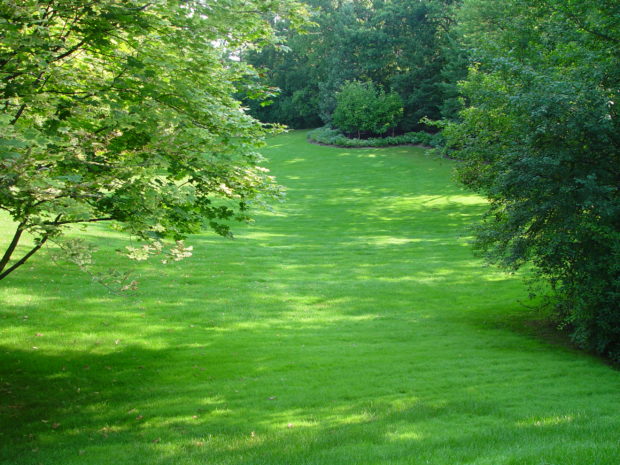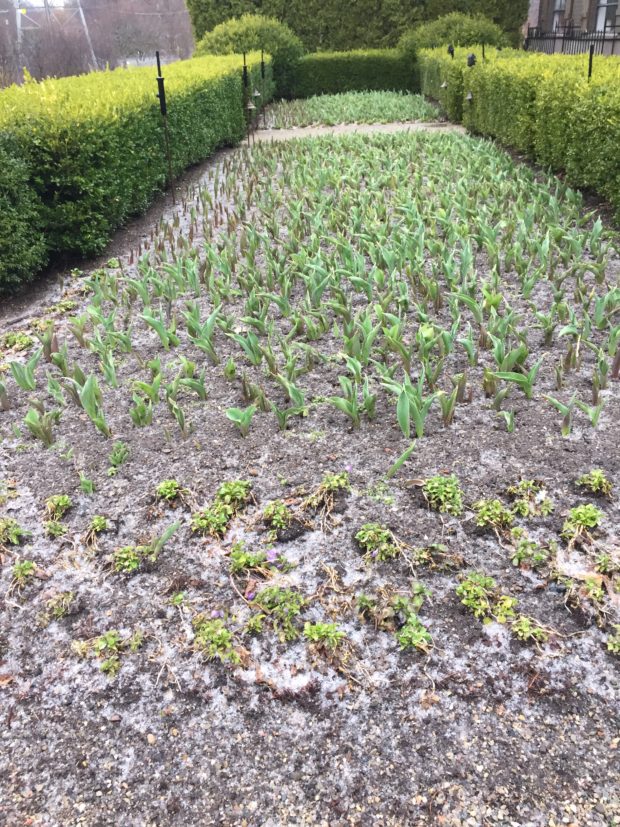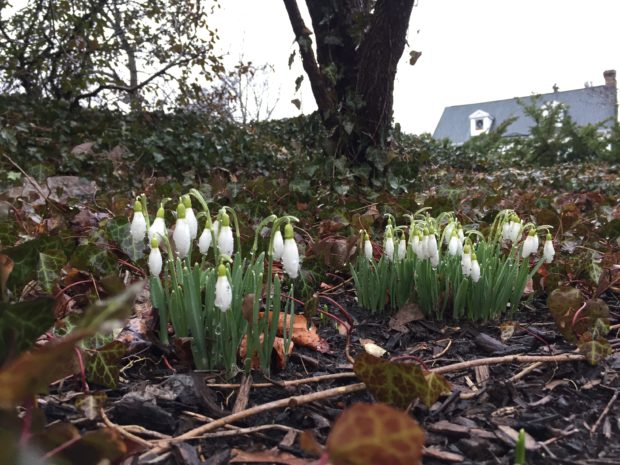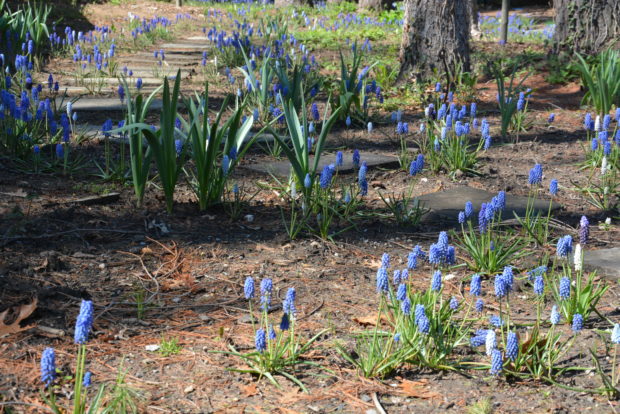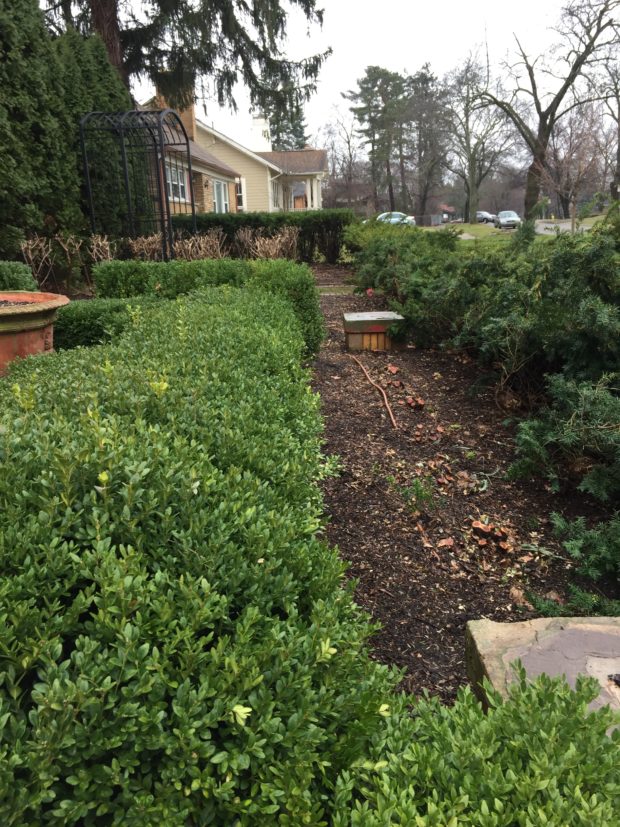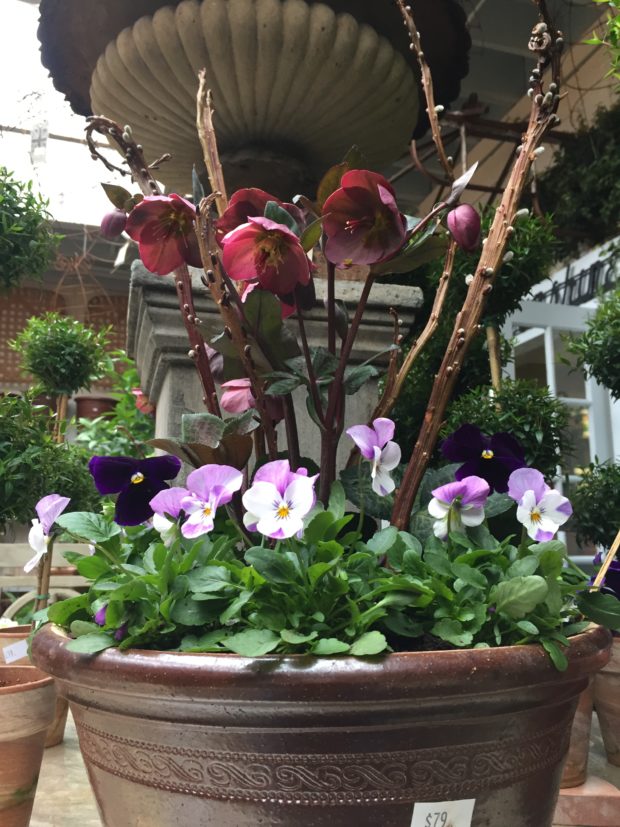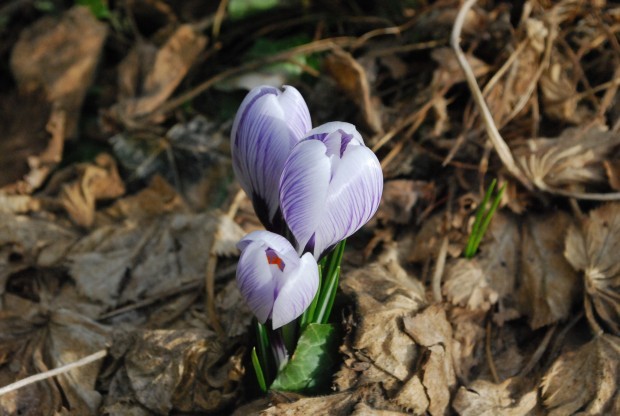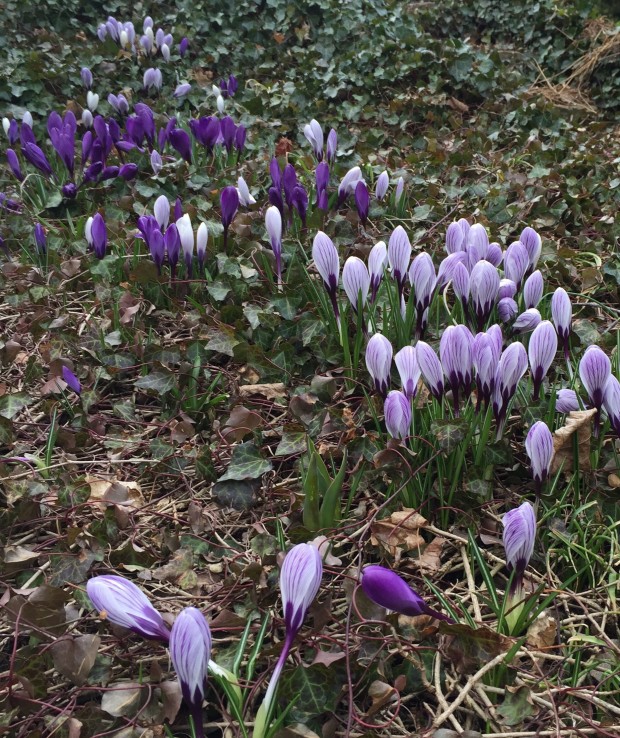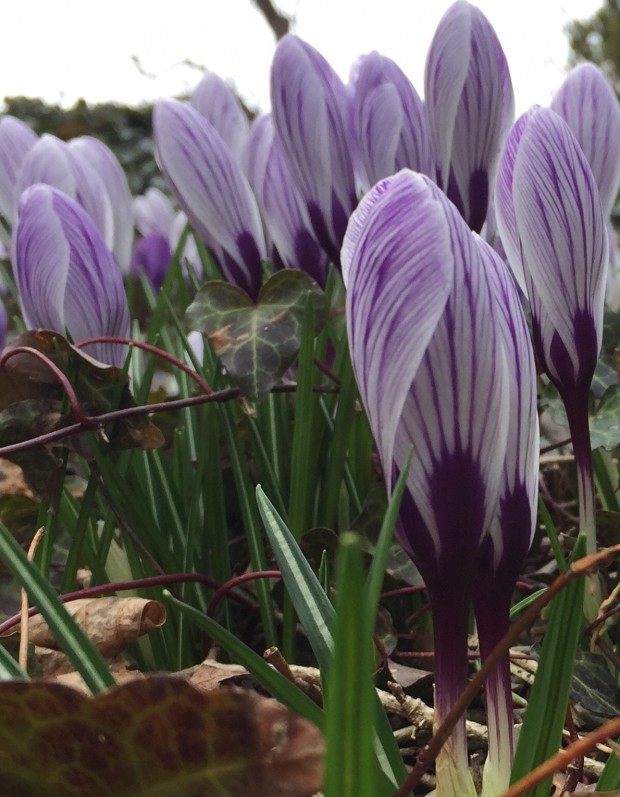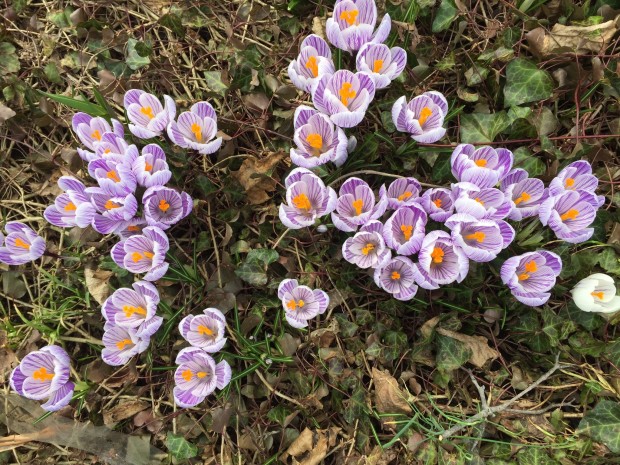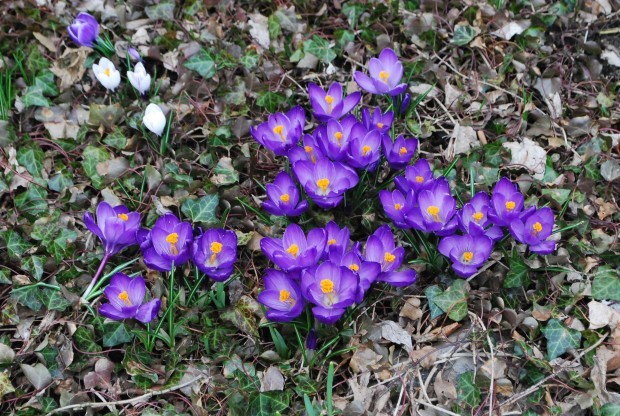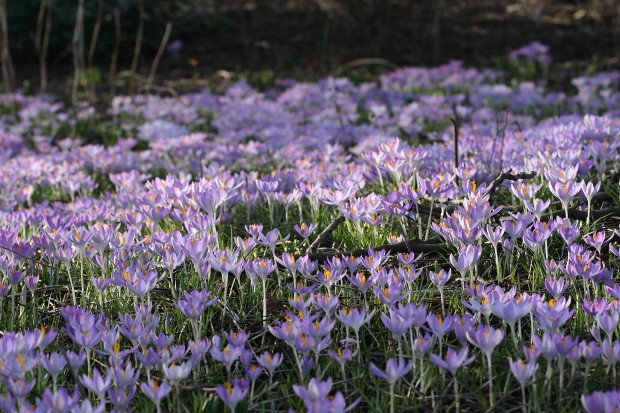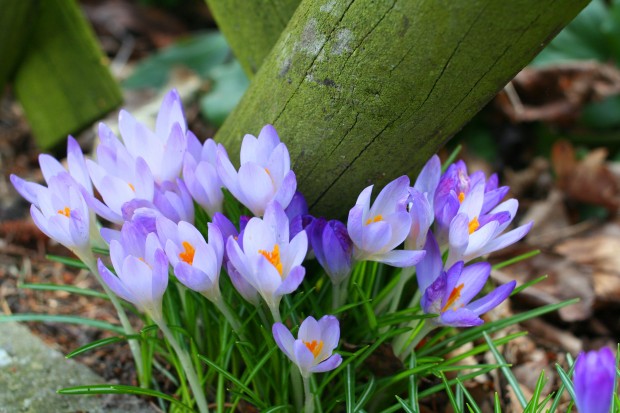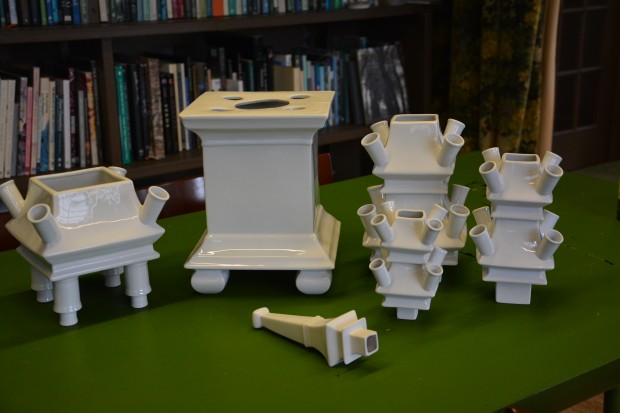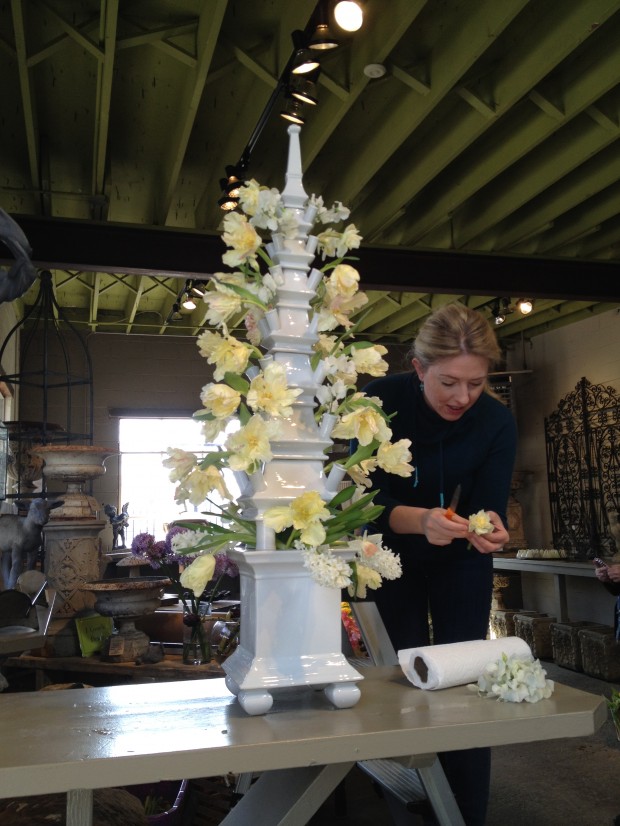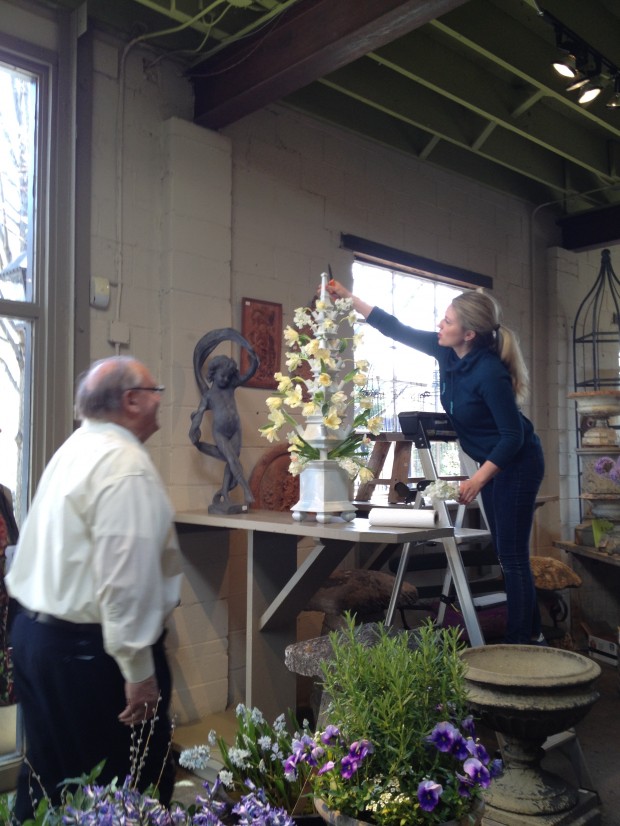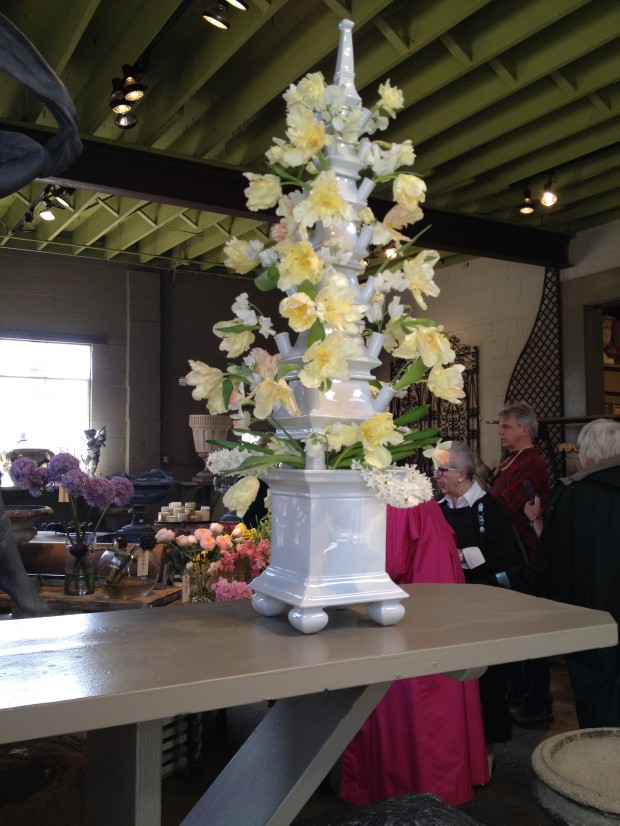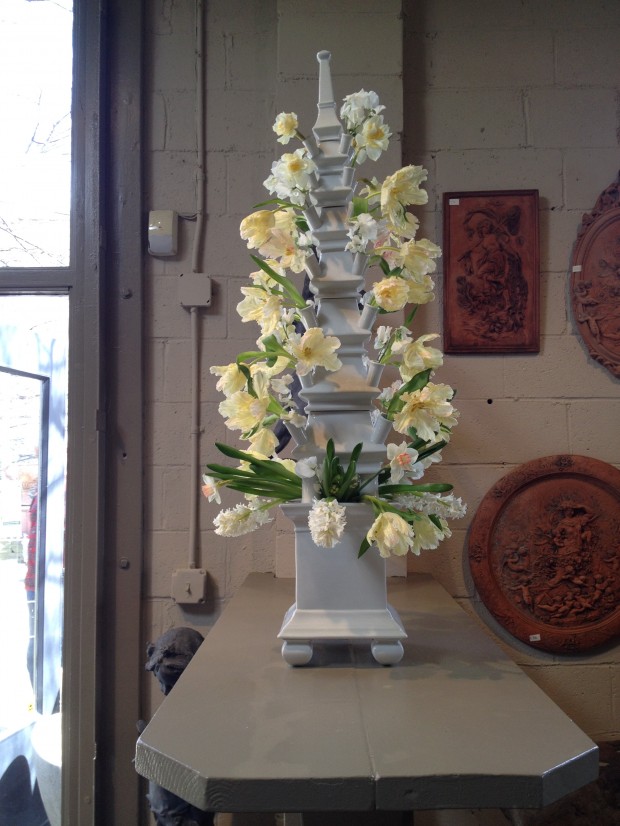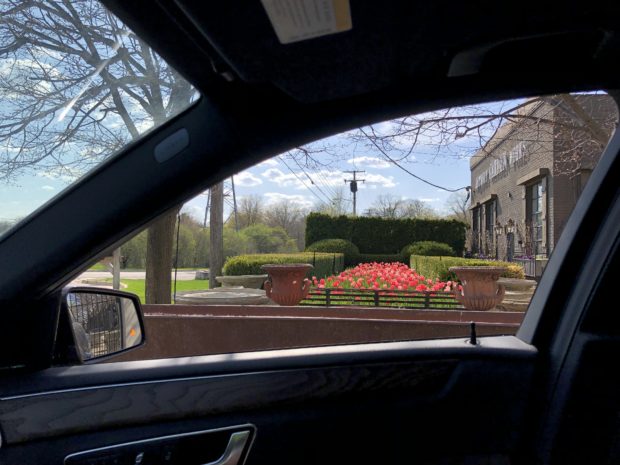 A few days ago I drove to Metamora to see a client. For those of you not in my area, it took over an hour and a half to make the trip out and back. I only saw tulips blooming in one place that entire trip. A group of 30 or so bright peach tulips outside a business were easy to spot, even though I was driving 55mph. They looked glorious. Nearer to my client’s property, miles on a country gravel roads, I saw nary a one. How disappointing, given that we are coming up on peak tulip season. There are so many species and groups from which to choose. A smattering of every class of tulip could keep a gardener in tulips for 6 weeks or better. But planting tulips has been in decline in our area for quite some time.
A few days ago I drove to Metamora to see a client. For those of you not in my area, it took over an hour and a half to make the trip out and back. I only saw tulips blooming in one place that entire trip. A group of 30 or so bright peach tulips outside a business were easy to spot, even though I was driving 55mph. They looked glorious. Nearer to my client’s property, miles on a country gravel roads, I saw nary a one. How disappointing, given that we are coming up on peak tulip season. There are so many species and groups from which to choose. A smattering of every class of tulip could keep a gardener in tulips for 6 weeks or better. But planting tulips has been in decline in our area for quite some time.
 I am sympathetic to gardeners who are having to deal with exploding populations of deer. They are incredibly destructive to landscapes and gardens alike. They can mow down an emerging collection of tulips in no time at all. Once the flower bud has been eaten off, that is it. No secondary bloom stalk and bud will replace the first. To see them destroyed is frustrating. It will be a year before there is an opportunity for a second chance. I would guess that declining tulip planting is in direct proportion to increasing deer populations. We have them at the shop, even though we are in an urban area. The vacant field next door is hardly what I would call a friendly habitat for deer.
I am sympathetic to gardeners who are having to deal with exploding populations of deer. They are incredibly destructive to landscapes and gardens alike. They can mow down an emerging collection of tulips in no time at all. Once the flower bud has been eaten off, that is it. No secondary bloom stalk and bud will replace the first. To see them destroyed is frustrating. It will be a year before there is an opportunity for a second chance. I would guess that declining tulip planting is in direct proportion to increasing deer populations. We have them at the shop, even though we are in an urban area. The vacant field next door is hardly what I would call a friendly habitat for deer.
 We do drench the young tulips from the time they break ground with Deer Scram or Liquid Fence. We have a number of deer repellent sprays, and we alternate them. We also fortify the perimeter of the bed with Plant Skydd. I find that deer repellents work, as long as we are possessed with applying it often and consistently. Of course this is a nuisance and an expense – but less so than the prospect of no tulips. Every tulip that came up is either in bloom, or about to bloom.
We do drench the young tulips from the time they break ground with Deer Scram or Liquid Fence. We have a number of deer repellent sprays, and we alternate them. We also fortify the perimeter of the bed with Plant Skydd. I find that deer repellents work, as long as we are possessed with applying it often and consistently. Of course this is a nuisance and an expense – but less so than the prospect of no tulips. Every tulip that came up is either in bloom, or about to bloom.
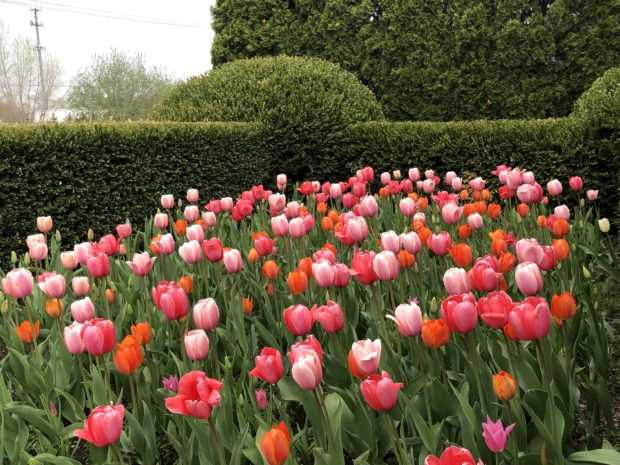 The first year following a fall planting of tulips is always the best. We plant number one grade bulbs that have been patiently grown on to that size by growers in Holland. A number one grade bulb results in a number one grade flower. A tulip bulb will divide itself after the first year. A smaller grade bulb produces smaller flowers, and in many cases, no flowers at all. So yes, a planting of tulips is not a forever planting, unless you limit your choice to the early flowering species tulips that are known for their persistence. If you should decide to defy nature, and provide optimum conditions for a repeat bloom the following spring, the foliage must be left intact until it completely matures. This can take a month or more. The process of photosynthesis enables the bulb to store food for next year’s flowers.
The first year following a fall planting of tulips is always the best. We plant number one grade bulbs that have been patiently grown on to that size by growers in Holland. A number one grade bulb results in a number one grade flower. A tulip bulb will divide itself after the first year. A smaller grade bulb produces smaller flowers, and in many cases, no flowers at all. So yes, a planting of tulips is not a forever planting, unless you limit your choice to the early flowering species tulips that are known for their persistence. If you should decide to defy nature, and provide optimum conditions for a repeat bloom the following spring, the foliage must be left intact until it completely matures. This can take a month or more. The process of photosynthesis enables the bulb to store food for next year’s flowers.
 The length of flowering has everything to do with the weather. A warm spring means a brief flowering period. A long cool spring means the flowers will last longer. This is true for every spring flowering bulb or ephemeral. Unlike the crocus, or the double bloodroot, who have been known to bloom and drop their petals over the course of one day, there will be that moment when the tulip flowers are perfectly glorious. That moment of great beauty is not much different in duration than the lilacs, peonies, redbuds, dogwoods and magnolias-brief, but so sweet.
The length of flowering has everything to do with the weather. A warm spring means a brief flowering period. A long cool spring means the flowers will last longer. This is true for every spring flowering bulb or ephemeral. Unlike the crocus, or the double bloodroot, who have been known to bloom and drop their petals over the course of one day, there will be that moment when the tulip flowers are perfectly glorious. That moment of great beauty is not much different in duration than the lilacs, peonies, redbuds, dogwoods and magnolias-brief, but so sweet.
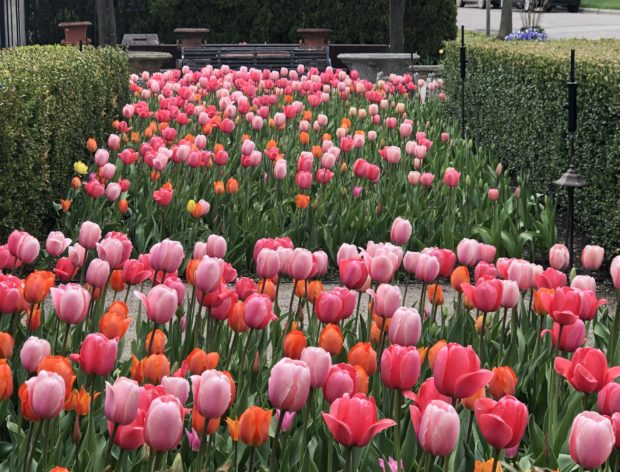 Tulips come in a wide range of colors. Just about every color, with the exception of blue. Gardeners in my zone who value blue is the spring have to content themselves with forget me nots, brunnera, lobelia, nigella and delphinium, among others. Choosing a collection of colors and succession of bloom can be a lengthy process, as there are so many possibilities. The flowers are large and striking, to say the least. This means they may not play well with other plants whose flowers are not so large or spectacularly showy. They can be tiresome in their demand for attention. In much the same way as peonies, delphiniums, lilies, hibiscus-you get the drift.
Tulips come in a wide range of colors. Just about every color, with the exception of blue. Gardeners in my zone who value blue is the spring have to content themselves with forget me nots, brunnera, lobelia, nigella and delphinium, among others. Choosing a collection of colors and succession of bloom can be a lengthy process, as there are so many possibilities. The flowers are large and striking, to say the least. This means they may not play well with other plants whose flowers are not so large or spectacularly showy. They can be tiresome in their demand for attention. In much the same way as peonies, delphiniums, lilies, hibiscus-you get the drift.
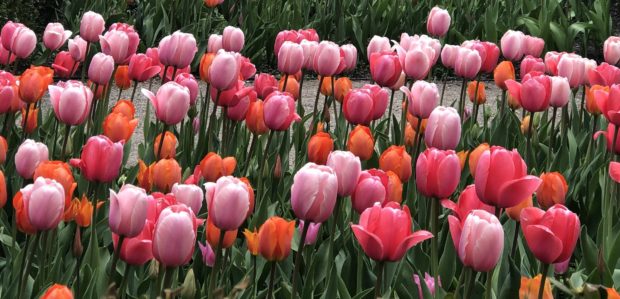 I have tried to dispassionately cover all of the reasons why not to plant tulips, but I would not dream of not having them myself. From the time they emerge from the newly thawed soil to the bloom a month later, their rapid growth is an enchanting process to watch. The leaves are beautiful in volume and form. Newly opened tulip flowers grow larger with every passing day. They brave the wind, cold temperatures and the occasional spring snow with aplomb. Even the tallest varieties stand upright without assistance. They make terrific and long lasting cut flowers, given a cool spot indoors. The variations in flower and leaf form, height, color and bloom time make them one of the most versatile of all spring flowering plants.
I have tried to dispassionately cover all of the reasons why not to plant tulips, but I would not dream of not having them myself. From the time they emerge from the newly thawed soil to the bloom a month later, their rapid growth is an enchanting process to watch. The leaves are beautiful in volume and form. Newly opened tulip flowers grow larger with every passing day. They brave the wind, cold temperatures and the occasional spring snow with aplomb. Even the tallest varieties stand upright without assistance. They make terrific and long lasting cut flowers, given a cool spot indoors. The variations in flower and leaf form, height, color and bloom time make them one of the most versatile of all spring flowering plants.
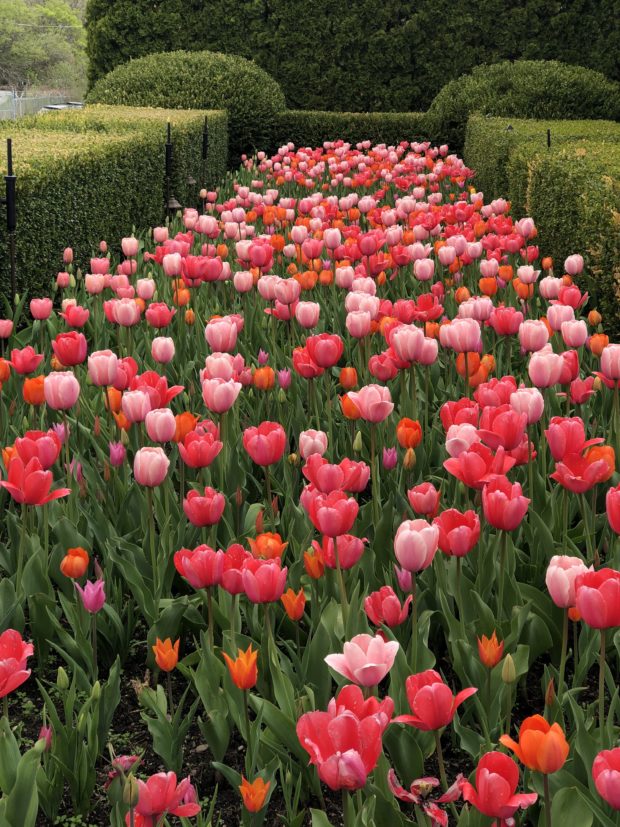 I plant a collection of tulips at the shop every year. This moment has been many months in coming, and is so welcome after a long drab winter. A lot of pictures get taken. Parents photograph their children with them in the background, and friends who come to shop do the same. I never see anyone walk by them without taking a good look.
I plant a collection of tulips at the shop every year. This moment has been many months in coming, and is so welcome after a long drab winter. A lot of pictures get taken. Parents photograph their children with them in the background, and friends who come to shop do the same. I never see anyone walk by them without taking a good look.
 The bloom is just about at it peak moment, should you be inclined to take a look. As for the trouble it takes to get to this moment, none of that interferes with the experience. Did I mention that fresh spring fragrance?
The bloom is just about at it peak moment, should you be inclined to take a look. As for the trouble it takes to get to this moment, none of that interferes with the experience. Did I mention that fresh spring fragrance?


